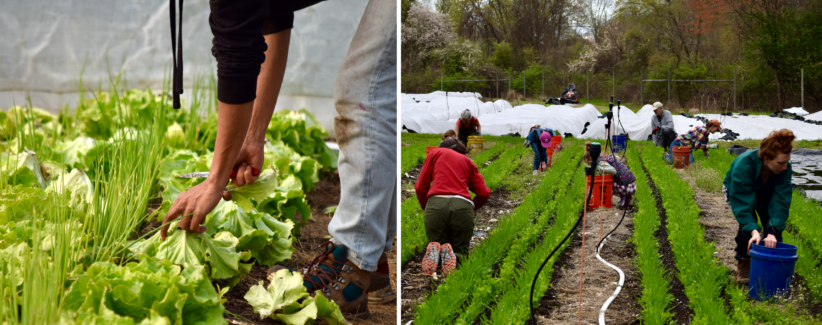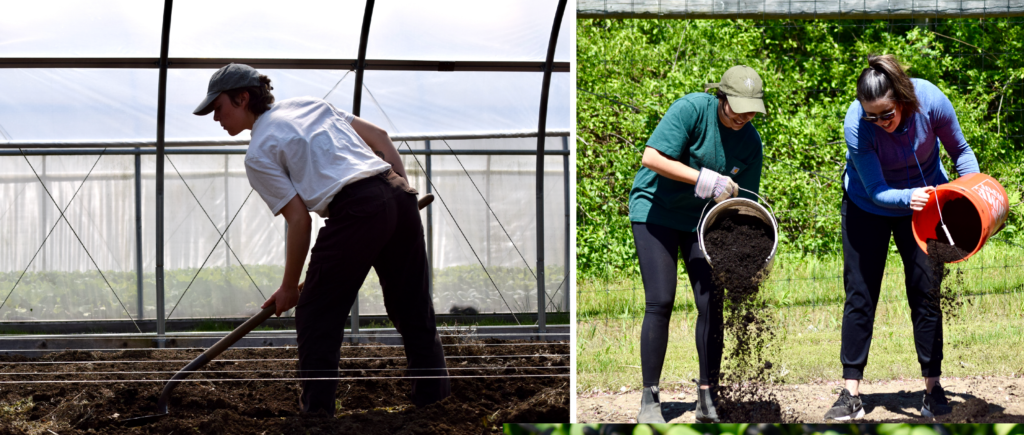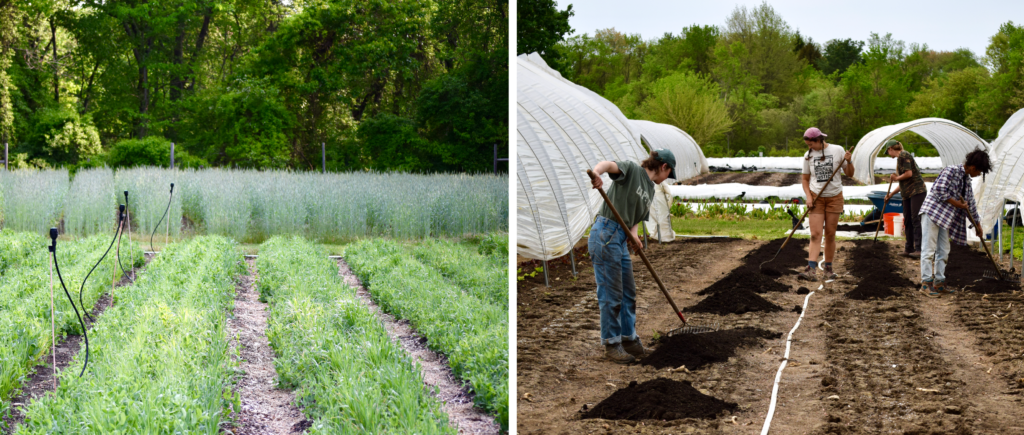A Big Picture Look at Gaining Ground’s Farming Practices

Gaining Ground grows over 50 different types of vegetables, fruits, and flowers on three acres of land with just over a half of an acre under tunnel production. We do this using no-till, regenerative methods that we see as beyond organic—meaning they meet and surpass organic growing requirements.
Many of the farming practices we employ at Gaining Ground have their roots in ancestral land management strategies that focus on the health of the entire ecosystem. We recognize that these techniques—including intercropping, no-till growing, polyculture, and the rotational cropping and resting of cultivated land—originate within Indigenous communities from around the world.
On the farm, we aim to align with nature’s principles of sustainability, regeneration, and reciprocity. This means we strive to create a balanced, diverse ecosystem that focuses on soil health and community health. As we work the land, assemble our crop plan, and make daily decisions of the farm, it is important for us to remember that soil health is crop health, which is animal/human health, which is ecosystem health.

Here are some of the principles we follow and values we hold while planning each season and managing the farm on a daily basis:
Nature’s Mindset
Nature knows best and we have so much to learn from her. Thinking and working in a nature-centered mindset is:
- Collaborative and communicative
- Generous and supportive
- Holistic:
- Everything transforms—nothing is wasted
- All is interconnected and interdependent
- Every being has a role

Nature’s Principles on Earth Are Nature’s Principles in Agriculture
- Maximize photosynthesis
All life on earth depends on photosynthesis. We strive to have plants growing everywhere—even throughout the winter—as much as is possible in New England. We make use of a diverse variety of cover crops, especially winter rye, which can photosynthesize all winter long. We employ interplanting techniques to create full plant coverage of the soil in our beds. We plant multiple crop successions each season, aiming to keep beds out of production for as little time as possible.
- Cover the soil
In nature, the soil is always covered and never left bare. Following this principle, we strive to have plants growing whenever and wherever we can. In the areas where plants do not cover the soil we use mulches. We prefer to use a living mulch like a cover crop, but when that is not possible we put down compost, leaves, wood chips, sea salt marsh hay, and—as a last resort—landscape fabric or silage tarps.
- Minimize disturbance of the soil—at, above, and below its surface
We do not till, plough, or disk at Gaining Ground. Instead, we have a permanent bed system—meaning we do not drive our tractor on or set foot in the soil of our beds—in order to minimize disturbance. We are learning the importance of biological life within the soil and how fungi, bacteria, protozoa, nematodes, and all the other microorganisms play a key role in the transfer of nutrients and water to plants, and help produce healthy, vibrant, more nutrient-dense crops. A handful of soil contains more organisms than there are human beings on earth! We do use broadforks, rakes, and a tilther (a mini tiller that only disturbs the top one to two inches of the soil and is powered by an electric hand drill). We also leave the roots of harvested crops or terminated cover crops in the ground whenever possible, using careful succession planning and tarping methods to transition between plantings.
- Celebrate diversity
We grow over 50 different vegetables, fruits, herbs, and flowers on this land and source as many seeds organically as possible. The spaces that we don’t actively cultivate for food production are also important elements of our landscape. We intentionally plant hedgerows every 500 feet on the farm in an effort to create habitat and food for pollinators. In recent years, we have focused increasingly on planting native flowers, shrubs, and grasses. We have erected birdhouses and even a bat box to further encourage biodiversity in our farm ecosystem. We also use diverse mulches, composts, inoculants, and fertilizer mixes. Diversity creates stronger, healthier, and more resilient systems and we are constantly thinking about how to further complexify our landscape.